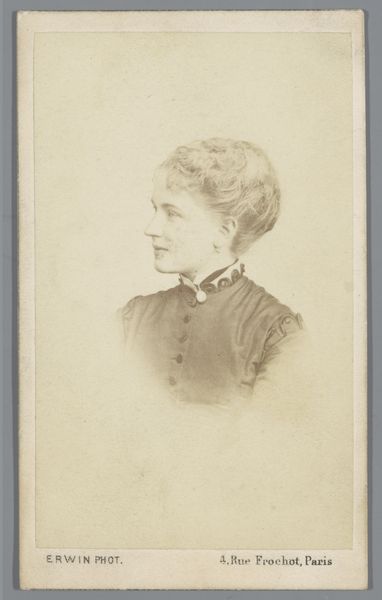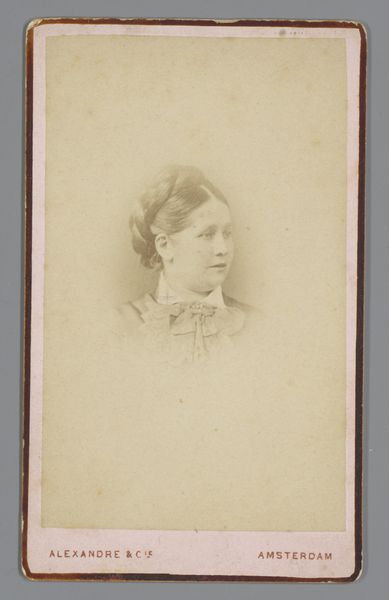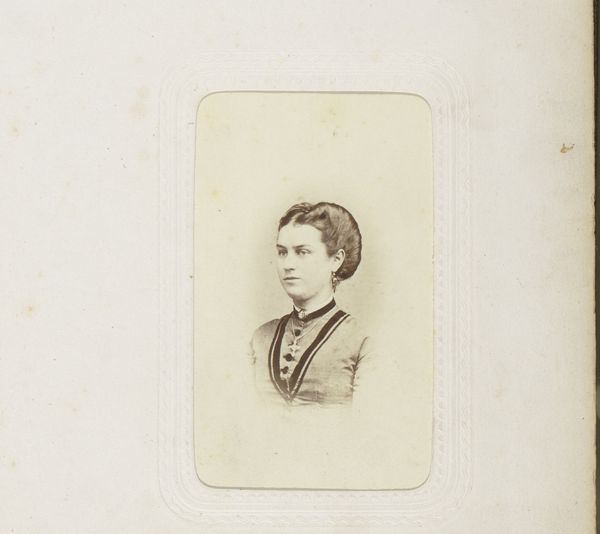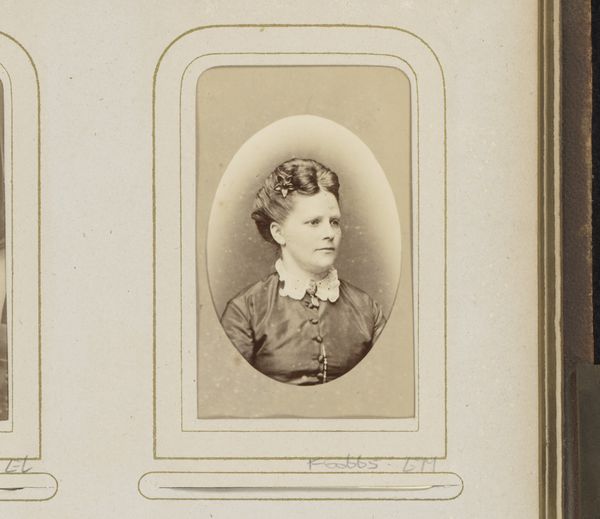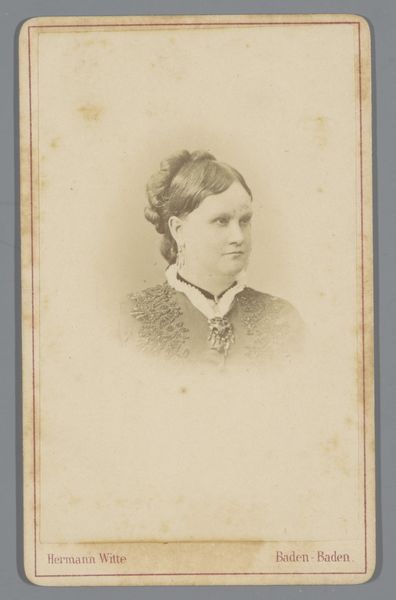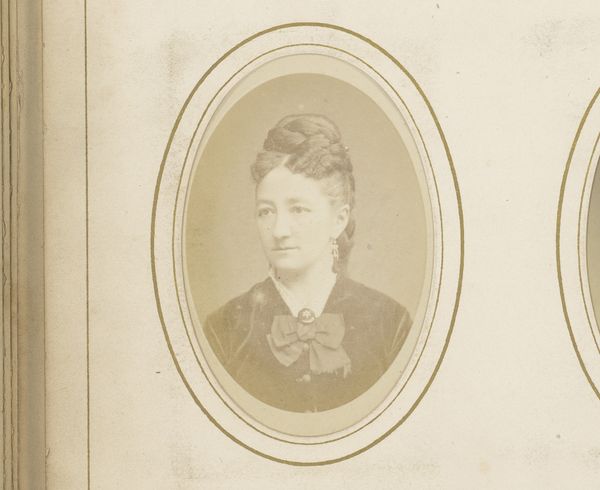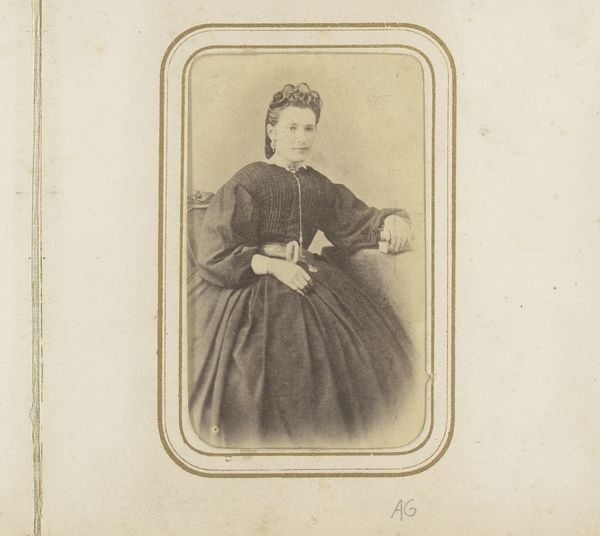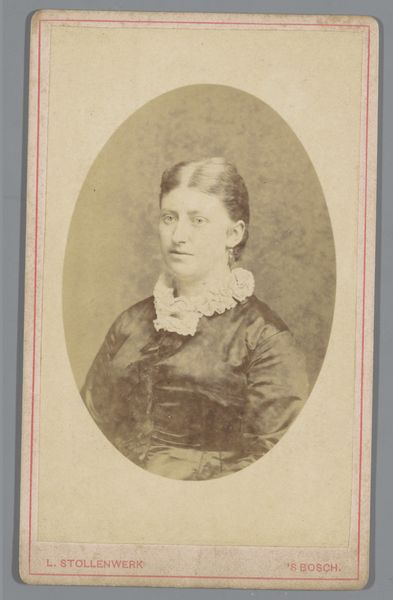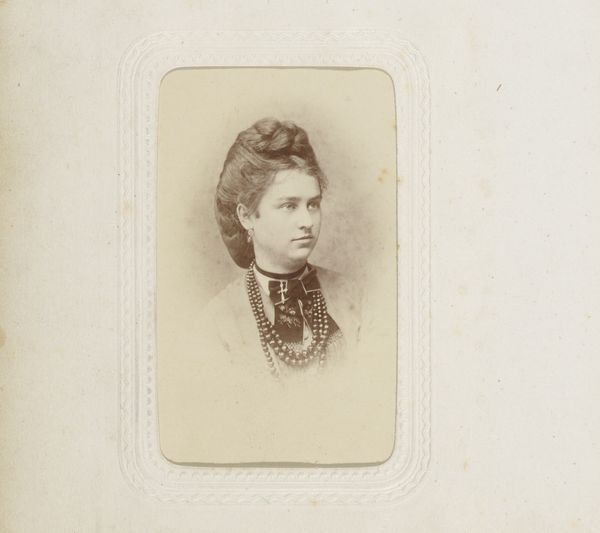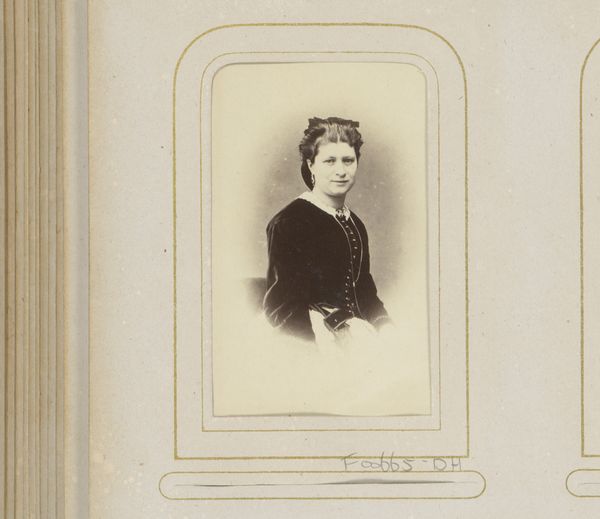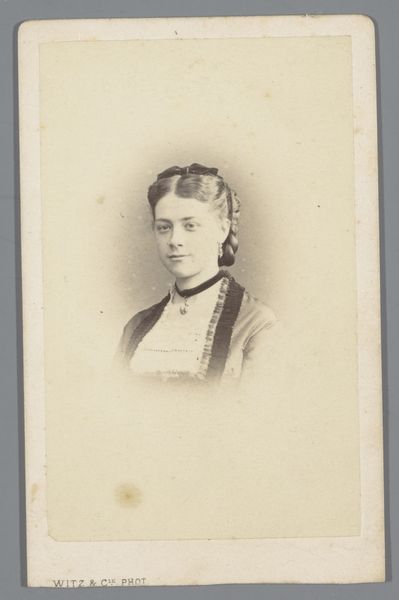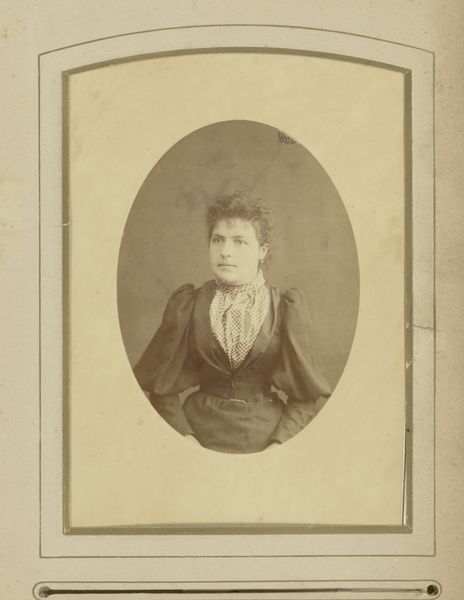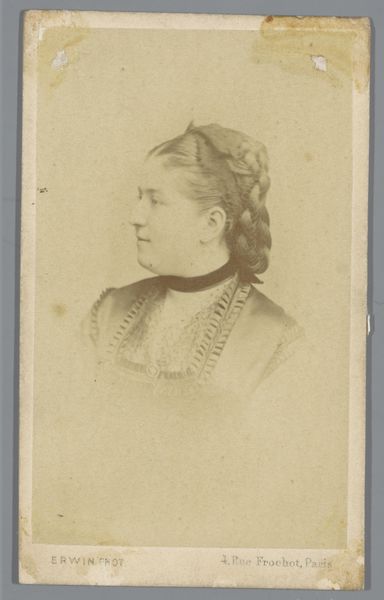
photography, gelatin-silver-print
#
portrait
#
photography
#
gelatin-silver-print
Dimensions: height 87 mm, width 53 mm
Copyright: Rijks Museum: Open Domain
Editor: Here we have "Portret van een vrouw met halsketting en linten in het haar" – Portrait of a woman with necklace and ribbons in her hair – made between 1860 and 1900 by Atelier Rafael. It's a gelatin-silver print photograph. What immediately strikes me is its intimate scale, like a glimpse into a private world. How do you see this portrait? Curator: For me, this image speaks volumes about the constraints and performances of femininity during this period. Consider the woman’s pose, her adornments – the necklace, the ribbons meticulously woven into her hair. These weren’t just aesthetic choices. How might these elements speak to social expectations, gender roles, or even silent forms of resistance? Editor: That's interesting. I hadn't thought about the ribbons as anything more than decorative. Could they represent something specific? Curator: Perhaps. Ribbons and hairstyles were often coded with social meanings, signaling marital status, family lineage, or even political affiliations. The almost obsessive attention to detail could reflect the limited avenues available for women to express individuality and power in a patriarchal society. What does this suggest to you about the woman’s position within the societal framework of her time? Editor: It makes me reconsider her expression, which initially seemed passive. Now, I wonder if it's more a mask, a way of navigating a world that didn't fully allow her voice. Curator: Exactly! And the photographer, Atelier Rafael, also plays a role in this construction. By posing her in this manner, framing her with light and shadow, what kind of narrative are they complicitly constructing? These early portraits were crucial in shaping perceptions and reinforcing ideologies of beauty and womanhood. Editor: I never thought a simple portrait could reveal so much about power dynamics and societal pressures! Curator: Precisely. It encourages us to critically examine not just the art itself, but the social and historical context in which it was created and continues to be viewed.
Comments
No comments
Be the first to comment and join the conversation on the ultimate creative platform.
